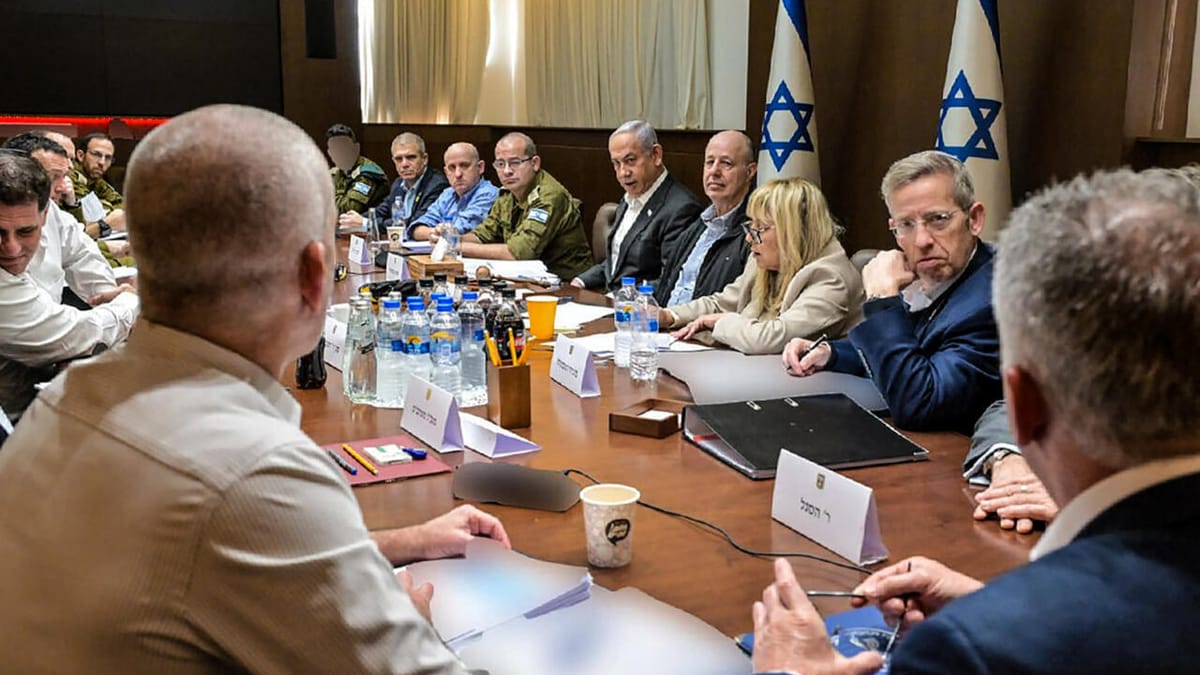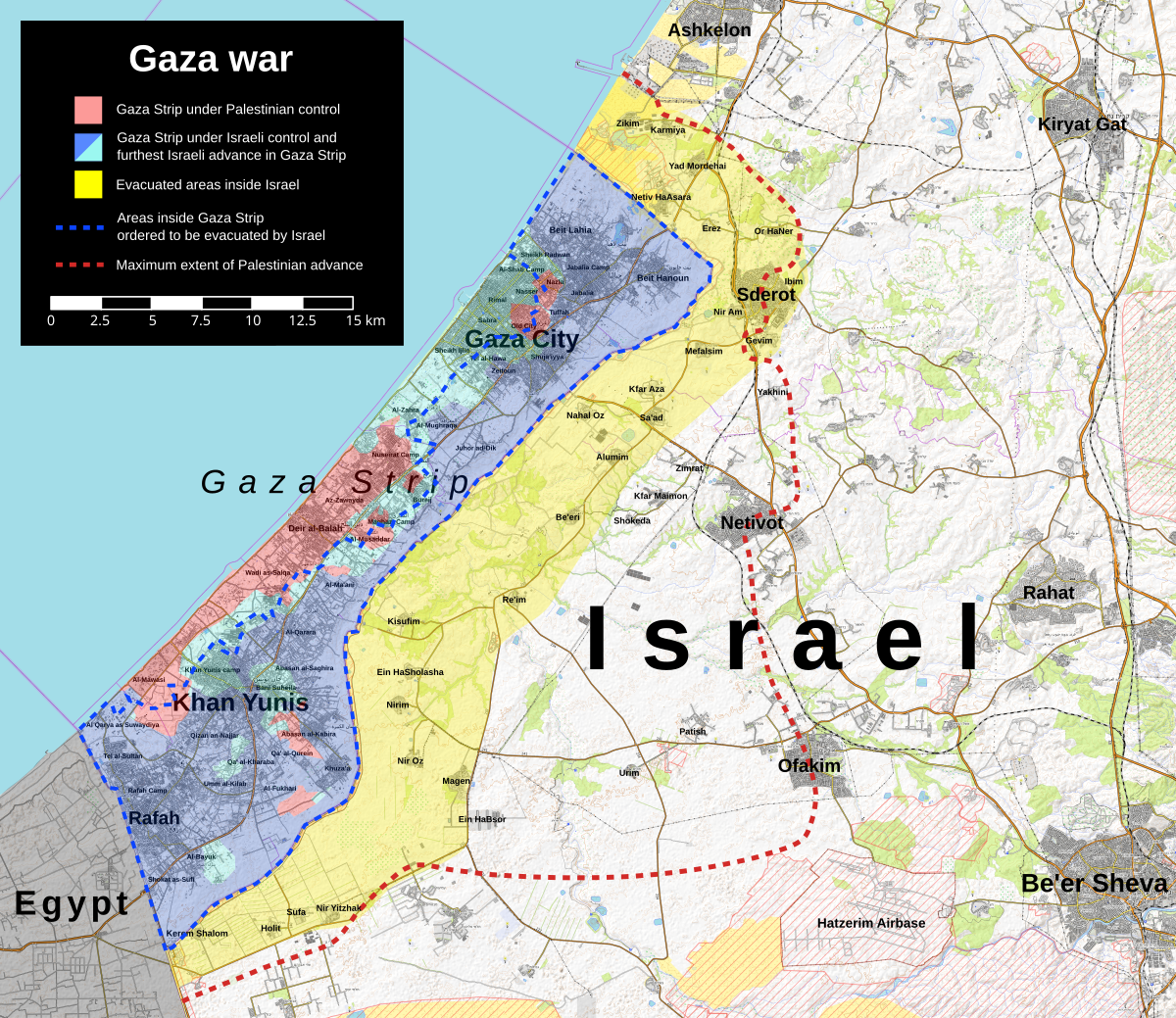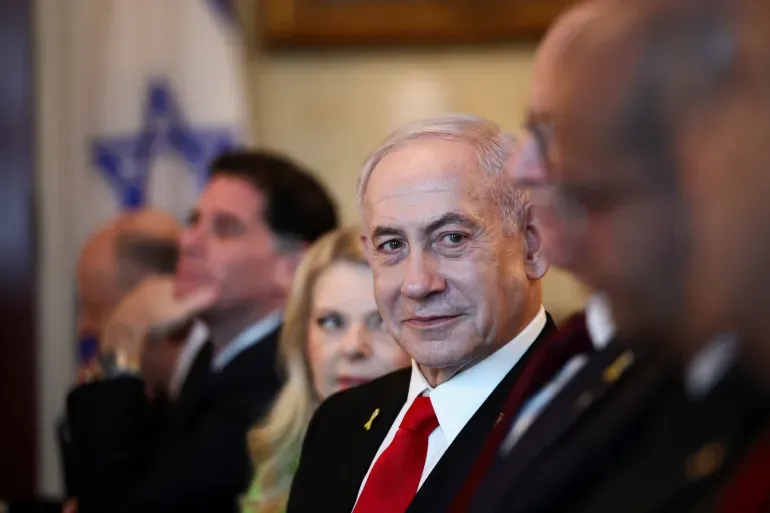The Inevitable Return: Why Netanyahu's Gaza Strategy Hinges on Negotiations
Analyze the political and military pressures driving Israel back into talks with mediators. Explore renewed negotiations, the chances for lasting peace, and humanitarian relief. Examine how Israeli internal politics, protests, and coalition dynamics affect negotiation strategy.

Written By Lavanya, Intern, Allegedly The News
TEL AVIV, August 22, 2025
After months of intense and devastating conflict, marked by immense human suffering and a deepening humanitarian crisis, the Israeli government, under Prime Minister Benjamin Netanyahu, has returned to the negotiation table. This decision, while seemingly a reversal of its long-standing "total victory" strategy, is a pragmatic, if reluctant, response to a confluence of unyielding political and military pressures.
The Unbearable Pressure: A Military and Political Deadlock
For months, Prime Minister Netanyahu has maintained a firm stance that Israel's military operation in Gaza would not cease until "total victory" was achieved, defined as the complete dismantling of Hamas's military and governing capabilities. However, as the conflict has stretched on for over a year and a half, the reality on the ground has challenged this objective.
Militarily, while the IDF has inflicted significant damage, it has become clear that a total and unconditional victory is a distant and increasingly costly goal. Hamas has proven remarkably resilient, utilizing a vast network of tunnels and its deep entanglement within the civilian population to evade and fight the IDF. As per an Israeli security assessment, the IDF is showing signs of fatigue and strain after a protracted campaign across multiple fronts. This has created a situation of military diminishing returns, where each additional operation yields less strategic advantage at a higher cost in both Israeli and Palestinian lives. The planned assault on Gaza City, for instance, is anticipated to require a large-scale mobilization of reserves and risks a significant increase in casualties.
The political pressures are arguably even more potent. The families of the remaining hostages held in Gaza have become a powerful and relentless force in Israeli society. Their public protests and emotional appeals have shifted public opinion, placing immense pressure on the government to prioritize the lives of their loved ones over military goals. A significant portion of the Israeli public now believes that the return of the hostages is the most urgent priority, even if it requires difficult concessions. The latest mass protests in Tel Aviv, demanding a deal to free the hostages, are a stark reflection of this sentiment.
Netanyahu's fragile coalition government also plays a critical role. The far-right members of his cabinet, such as Finance Minister Bezalel Smotrich, have threatened to topple the government if significant concessions are made to Hamas. This internal political tightrope walk leaves Netanyahu in a precarious position, where a move toward negotiation risks a domestic political crisis, while a continued military-only approach fuels public dissent and intensifies the hostage families' anguish. The political landscape is a zero-sum game for the Prime Minister; every decision is a calculation of political survival.

Renewed Talks: What's on the Table?
The current round of negotiations, mediated by Qatar and Egypt with active US involvement, has been described as a renewed diplomatic push to end the nearly two-year-long conflict. According to sources familiar with the talks, the latest proposal involves a 60-day pause in fighting, a partial Israeli troop withdrawal, and a significant increase in humanitarian aid into Gaza. In return, Hamas would release a portion of the remaining Israeli hostages in exchange for a large number of Palestinian prisoners.
The key demands from both sides reveal the immense chasm that still exists. Israel's primary objective is the return of all remaining hostages, with some officials demanding their release at once. Hamas, for its part, seeks a permanent ceasefire, a full withdrawal of Israeli forces from Gaza, an end to the blockade, and the release of a large number of Palestinian prisoners, including those serving life sentences.
The role of the hostages is central to these negotiations. Their fate gives Hamas its primary leverage. The phased release of hostages is a likely mechanism to build trust and allow for the implementation of other parts of the deal, such as increased aid and troop redeployment. However, the absence of a firm, public commitment from Israel to a permanent ceasefire remains a major sticking point, as Hamas fears that a temporary truce would simply allow Israel to regroup before resuming its offensive.
The Catastrophic Humanitarian Imperative
Beyond the military and political maneuvers, the humanitarian situation in Gaza has become a critical driver of the negotiation process. Over 62,000 Palestinians have been killed, and more than 139,000 have been injured since the war began in October 2023, according to the Gaza Health Ministry. The United Nations and other international bodies have repeatedly warned of widespread famine, with reports of children dying from malnutrition-related causes. Over 86% of the Gaza Strip is within an Israeli-militarized zone, and over 1.9 million people have been displaced, many multiple times.
The sheer scale of the humanitarian disaster has triggered a global outcry and placed immense pressure on Israel and its allies. International organizations like the International Rescue Committee (IRC) have highlighted the dire need for food, water, medical supplies, and shelter. The recent resumption of aid deliveries, while a positive step, is a fraction of what is needed to address the crisis.
The humanitarian urgency is not merely a side issue; it is a central pillar of the renewed talks. Any ceasefire agreement must include provisions for a massive and unimpeded flow of humanitarian assistance to prevent further catastrophic loss of life.
Echoes of the Past: Will This Time Be Different?
The history of Israel-Hamas ceasefires is a cautionary tale of temporary pauses in a cycle of conflict. Previous agreements, often brokered by the same mediators, have consistently broken down. In the 2014 conflict, for example, multiple humanitarian ceasefires were violated by both sides. A significant deal in January 2025, which included a phased release of hostages and increased aid, also faltered when Israel accused Hamas of violating the deal. This history of broken agreements fosters deep-seated mistrust and makes securing a lasting truce incredibly difficult.
This time, the circumstances are different in their scale and severity. The duration of the conflict, the number of casualties, and the domestic political pressure in Israel are unprecedented. The stakes are much higher, and the potential for a regional conflagration remains a constant threat. The involvement of the United States, particularly President Donald Trump's administration, adds a new and unpredictable dimension to the talks. A recently disclosed document from the Carnegie Endowment for International Peace suggests that a full-scale "all-for-all" strategy, involving a comprehensive end to the war and a post-war plan, is the only sustainable option, but it is one that both sides have been reluctant to embrace.

The Path Forward: A Fragile Balance
The renewed negotiations represent a fragile balance between Israel's need to end the war, secure its hostages, and maintain its long-term security. The talks also offer Hamas a potential "exit strategy," allowing it to claim a political victory by securing a permanent ceasefire and the release of prisoners, while still remaining a relevant force in Gaza. The success or failure of these talks will hinge on the willingness of both sides to make difficult compromises.
International mediators, the US, Egypt, Qatar, and the UN, are indispensable. They provide the necessary back-channel communication and diplomatic pressure to keep the parties engaged. Their role is not just to facilitate a deal but to provide the guarantees and oversight needed to ensure it is implemented.
The Pragmatism of Exhaustion
Israel's return to the negotiation table is not an ideological surrender but a pragmatic recognition that a purely military solution has reached its limits. The immense human suffering in Gaza, the relentless public pressure from the hostage families, and the mounting international and military fatigue have collectively forced a strategic recalculation. This is the pragmatism of exhaustion, a difficult acknowledgment that the current path is unsustainable.
While the prospects for a comprehensive, lasting peace remain distant, a temporary ceasefire that secures the release of hostages and allows for a massive influx of humanitarian aid is a tangible and essential goal. The current talks represent a pivotal moment, offering a narrow but vital window to de-escalate the conflict and prevent further tragedy. Failure to reach a deal would not only prolong the suffering but could ignite a wider regional conflict with catastrophic consequences.
Beyond the Headlines: What's the True Cost of Stalled Diplomacy?
- How does the ongoing trauma and psychological impact on both Israeli and Palestinian populations complicate the prospects for a lasting peace, even if a ceasefire is achieved?
- Given the history of failed agreements, what kind of external, binding guarantees or a new enforcement mechanism would be necessary to ensure that both sides uphold a potential deal this time?
Sources
The Times of India, The Associated Press, Carnegie Endowment for International Peace, United States Institute of Peace, UN Office for the Coordination of Humanitarian Affairs (OCHA), and International Rescue Committee.




